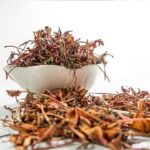Introduction
Cupping therapy is an alternative treatment that has been practiced for thousands of years in various cultures, including ancient Chinese, Egyptian, and Middle Eastern civilizations. While once considered purely traditional, cupping has recently experienced a surge in popularity due to endorsements from athletes, celebrities, and wellness influencers. This article explores the origins, methods, potential benefits, risks, and the scientific outlook on cupping therapy.
What Is Cupping Therapy?
Cupping therapy involves placing cups on the skin to create suction. This suction pulls the skin and superficial muscle layers into the cup. The technique is believed to promote healing through increased blood flow, lymphatic drainage, and the removal of toxins.
There are two main forms:
- Dry Cupping – Only suction is applied.
- Wet Cupping (Hijama) – Involves both suction and controlled medicinal bleeding using small skin incisions.
History of Cupping Therapy
Cupping dates back to at least 1,550 BCE. The Ebers Papyrus, one of the oldest medical texts from ancient Egypt, mentions cupping. Traditional Chinese Medicine (TCM) also incorporated cupping centuries ago, viewing it as a way to balance qi (life force) and remove stagnation from the body. Islamic medicine has used cupping (hijama) since the time of Prophet Muhammad, who reportedly recommended it for various ailments.
Types of Cupping Therapy
- Glass Cupping – Traditional method using fire to create suction inside glass cups.
- Silicone or Rubber Cupping – Modern cups that can be squeezed to create suction.
- Magnetic Cupping – Incorporates magnetic materials believed to enhance healing.
- Flash Cupping – Cups are applied and removed quickly in succession to stimulate blood flow.
- Massage Cupping – Cups are moved across lubricated skin for a deep tissue-like massage.
Benefits of Cupping Therapy
Though evidence varies, cupping therapy is popularly used for:
- Pain relief (especially for neck, back, and joint pain)
- Reducing muscle tension and inflammation
- Improving circulation
- Relaxation and stress relief
- Migraines and headaches
- Respiratory conditions (e.g., asthma, bronchitis)
- Skin conditions (like acne and eczema)
- Digestive issues
Athletes often use it to reduce muscle soreness and speed up recovery.
Scientific Evidence and Skepticism
The scientific community has mixed views on cupping therapy. Some small-scale studies suggest it may help with conditions like chronic back pain, fibromyalgia, and migraine. However, larger and more rigorous studies are needed to confirm these effects.
Critics argue that cupping may work primarily due to the placebo effect, and that benefits are often short-term. Still, some patients report noticeable relief, especially when combined with other therapies like acupuncture or physical therapy.
Risks and Side Effects
Cupping is generally safe when performed by a trained professional. However, side effects may include:
- Bruising or discoloration (usually temporary)
- Skin irritation or burns
- Dizziness or lightheadedness
- Infection (especially in wet cupping if hygiene is poor)
- Scarring (in rare cases)
People with certain medical conditions—such as bleeding disorders, skin diseases, or who are pregnant—should consult a doctor before undergoing cupping.
Conclusion
Cupping therapy blends ancient wisdom with modern curiosity. While its effectiveness is still debated in scientific circles, many people find it helpful for managing pain and stress. As with any alternative therapy, it should be approached with awareness and used as a complement—not a substitute—for conventional medical care.
Disclaimer
This article is for informational purposes only and does not constitute medical advice. Always consult a healthcare professional before starting any new treatment or therapy.


